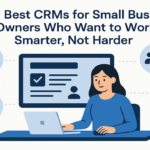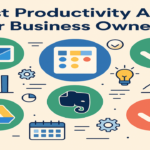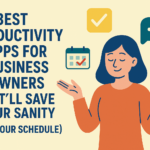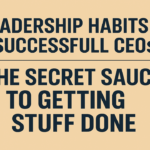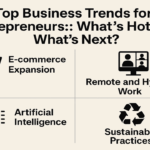Wondering what is the marketing mix? All the steps and considerations are listed in this article read till the end to know all about the famous marketing mix.
Business sounds simple at first; after all, it’s just about creating a product? It’s so much more than choosing a product; business starts with finding a product on-demand, placing it where people usually buy that kind of stuff, pricing it according to the purchasing power of the customers as well as keeping your own budget in mind, and perfect timing all of these things too.
However, It’s far from being a piece of cake; all of these things require hard work, market knowledge, research, tactics, and constant effort in adapting to the new needs and demands. In addition to extreme effort, you have to work very meticulously too; you can’t rush into things and avoid details; that will ruin businesses. Your business is like a baby, and you have to raise it from scratch. This demands a massive amount of effort and time from you.
Even if one element goes wrong, it spells a disaster. One simple mistake can create a chain reaction, and the effects will seep into the whole structure. For example, you promote vehicles with perfect fuel economy features in a country with abundant and cheap fuel, such as the Arab world. This is a huge mistake because the customer will not even pay heed to your message. Your pricing strategy may be imbalanced, or the target market is not the right thing for the product. All of these things are single, small acts, but they will affect the whole structure, the entire business.
What are the 4 Ps?
The four Ps of marketing denote those critical factors that are part and parcel of marketing a product or a service. The famous four Ps are product, price, place, and promotion. generally known as the marketing mix, they are limited by external and internal factors in the business environment, and they interact with one another.
Companies use the 4 Ps to identify important business factors like what consumers want from them, how customers perceive their product or service, how their product or service meets or fails to meet those needs, and how they stand out from their competitors, and how they interact with them.
Understanding the 4 Ps
Neil Borden is the man behind the idea of the marketing mix or the four Ps—in the 1950s. In his 1964 article titled “The Concept of the Marketing Mix,” Borden showed the ways/advertising tactics that companies could employ to engage their consumers. Borden’s ideas are still popular even after decades, and they are constantly being developed and upgraded with knowledge and experience.
In reality, E. Jerome McCarthy, a marketing professor at Michigan State University, developed and refined the concepts in Borden’s book and gave rise to the idea of the “4 Ps,”. In 1960, McCarthy co-wrote the book “Basic Marketing: A Managerial Approach,” which popularized the concept.
When the concept first came to the surface, the marketing mix helped companies take care of the physical barriers that hindered widespread product adoption. Nowadays, the internet has allowed businesses to overcome some of the physical barriers and helped businesses achieve a higher level of integration between companies and consumers. In addition to the four Ps, People, process, and physical evidence are extensions of the original 4 Ps and are more relevant to the current trends in marketing.
An explanation of the four
Ps
Product
A product is a good or service that a company offers to its customers. In an ideal setting, a product fulfills an existing demand in the market. Alternatively, a product creates demand for itself because it’s so compelling and attractive that it creates its own space. It creates a desire for anew. To be successful, the life cycle of a product has to be understood, and executives need to have a solid plan for dealing with the needs of the product at every specific stage. It’s not just about demand and supply, the type of product will also dictate its price, placement, and promotional strategies.
Creating a product that is high in demand is not the only winning tactic; sometimes, a revolutionary product can hit more significant milestones. Luxury items can really take the whole thing to a new level if they hit the right chord with the potential consumers. Just consider the case of smartphones. Although they were once a new idea, they have made history with their sales, a total novice product.
Price
Price refers to the price your consumers will pay for your product. The cost of a product is based upon many factors. The price is determined according to the perceived and real-time value of the product and the kind of changes that it brings to the life of the user. Plus, the supply charges, discounts, and competitors’ prices play their role in fixing the price of a product.
It may sound unethical, but sometimes business executives raise the prices of their products to make them appear as luxury products. Occasionally, prices are lowered to pick up sales speed and lure more consumers. Alternatively, they may reduce the cost so more consumers can try the product.
UNIQLO, a Japanese brand, is a global casual wear king. Like its competitors, it creates low-priced casual wear clothes to accommodate its customers. Its competitors are famous international brands like Zara, Gap, etc.
UNIQLO stands out because it creates different, creative, innovative, and quality products at a comparatively low cost. It can maintain quality standards by exclusively procuring the finest material from its traditional material manufacturers. There is no compromise on the fabric’s quality, which sets it apart from most of its international competitors.
The simple thing it does to manage price is to order fabric in large quantities, and it orders only the trusted manufacturers to maintain a high level of quality and low cost. The company directly communicates its requirements with the manufacturers to ensure the finest material for its innovative products.
UNIQLO manages the best prices for excellent products by outsourcing its production to partner factories; since it doesn’t have its own factories, it enjoys the ability to change production partners if the quality of a product is compromised.
Place
When a company decides where to place a product, it’s about where to sell it and how to find the right market and the right spot in the market. The art is to get the product where the potential consumer is most likely to notice and consequently buy the product. Positioning a product so that it gets noticed instantly is crucial to successful marketing. If your product is not placed in the right place, it might never make a name in the market and drown before it ever gets known.
Placement decisions could be organizing the product in a store’s display or running its ads on the TV, during films, or even on social media. Placement is all about securing a spot where it grabs and leads the users’ attention to your product.
The 1995 movie GoldenEye was the seventeenth installment in the James Bond movie franchise. It was the first Bond movie not to feature an Aston Martin car. Instead, the British actor Pierce Brosnan got into a Z3 by BMW. Although the Z3 was not released until months after the film had left theaters, BMW received 9,000 orders for the car the month after the movie opened.
Promotion
Promotion includes advertising, public relations, and promotional strategy. The objective of promoting a product is to introduce the product appropriately. Explain its primary purpose and how it adds value to customers’ lives. Promotion or advertising explains why consumers should pay a specific price for the product; how does it justify the expense and bring ease or luxury into their lives.
Promotion and placement are inextricably linked together because together, they can reach their staunch, main, or, let’s say, core audience. To place your product where your core audience can see it is a promotional activity. Promotion is all about communicating with your targeted audience, and it is all about communicating effectively.
Promotion has seen the most significant growth and revolution due to the digital age. With B2C marketing solutions and unparalleled access to the markets and audience, marketers can now promote products more effectively and efficiently. There is a lot more personalization involved in the process, which has led to greater outcomes. Expectations are increased with effective communication that results in magnanimous sales- the kind that was just a dream in the past.
Some important questions to be asked are:
- How to reach your target audience?
- What forum or medium to use to send your marketing messages to the target audience?
- How is your competitor promoting their product? Can your promotional activity be affected by it?
- When to promote for the fastest and best results?
Important 4ps questions
An effective way to understand the 4Ps is to get acquainted with the questions asked for their implementation. Here are some of those sample questions that are asked at various stages of marketing about the four elements:
Product
- What are customer needs that must be satisfied? How does the product meet those needs or solve the problems of the customers or users?
- What features satisfy the customers’ needs or their problems specifically? Anything important that you might have missed out on? Anything done extra that won’t be useful to the customers and only adds to the price?
- How is the customer going to use it?
- What does the product look like?
- How will the customers feel experiencing it?
- What are the demands regarding size, color, and other such features?
- What sort of name will be best suited?
- How to effectively brand it?
- What’s the difference between your product and your competitors’?
Place
- Where do buyers/customers usually look for the product you intend to sell?
- What kind of store do people usually visit for the product you are selling? A specialist boutique or in a supermarket, or perhaps both? Online? Or direct via a catalog?
- How to reach the proper distribution channels?
- Do you need to use a sales force? Or attend trade fairs? Or make online submissions? Or send samples to catalog companies?
- How to learn from your competitors?
Price
- What value does the product or service hold for the buyer?
- Are there established price points for products or services in this area?
- Is the customer price sensitive? Will a slight decrease in price gain you extra market share? Or will a small increase be indiscernible and gain you a different profit margin?
- What discounts should be offered to trade customers or other specific segments of your market?
- How will your price compare with your competitors?
Promotion
- Where and when can you get your marketing messages across to your target market?
- Will you reach your audience by advertising online, in the press, on TV, radio, or on billboards? By using direct marketing mailshots? Through PR? On the internet?
- When is the best time to promote? Is there seasonality in the market? Are there any broader environmental issues that can potentially affect the timing of your launch?
- How are your competitors launching their products and how can that influence your product promotion?
Importance of marketing mix
There are many different benefits of the marketing mix that determine its importance for businesses;
- It helps explain the needs of your customers and how they are important
- Helps plan a good product launch
- Helps with creation and development and execution of effective marketing strategies
- It helps businesses make use of their strengths and avoid unnecessary costs
- It helps to face risks proactively
- Help figure out if a product is suitable for the potential customer
- Helps understand the requirements of customers
- It helps learn when and how to promote your product or service to your customers
Alternative marketing models
The 4ps are very important for understanding the marketing process and everything related to it. However, this model is not all in all; there are many alternatives.
Some other models that have been developed over the years are Boom and Bitner’s 7Ps: it’s often called the extended marketing mix, which includes the first 4Ps, along with people, processes, and physical layout decisions/positioning.
The 7 Ps of marketing mix
7 Ps of the marketing mix is an extended, modified version of the 4 Ps of marketing. This model is widely used in the service industry. The 7p marketing mix is the next step after you have completed the marketing step for constant reevaluation of the progress. Business is a continuous activity; once it’s working, you cannot rest or leave it on the backburner. Evaluation is a must, and 7ps is a perfect tool for it.
7Ps are an extension of the traditional 4Ps: product, price, promotion, place, packaging, positioning, and people. Since products, desires, demands, markets, and customers change rapidly, you must continually revisit these seven Ps to make sure you’re on track and achieving the maximum results possible for you in today’s marketplace.
People
When we say people, it refers to all the people – customers and employees – directly related to your product or service. It is imperative to forecast market trends and figure out customers’ needs and desires for business success, but at the same time, you need to hire the right people to promote and sell your product. Your customers are crucial for your business, but so are your employees. They are your “people.”
It is astonishing how marketers and business executives will pay attention to even the tiniest details of marketing and 7Ps and still forget that their policies need suitable people to carry them out in the real world. Policies are nothing but hollow words and aspirations until they are entrusted to the right person. As a business executive, it is indispensable to hire the right people in the correct position to implement the policies properly and achieve the expected results.
Process
Do you want your customers to have a smooth, hassle-free, efficient journey from the first inquiry to the final purchase? Every business owner wants that, and it’s impossible to have a smooth-running company without efficient and set processes in place. Systems and processes are crucial to building and delivering a perfect service, ensuring a pleasurable experience for the customers.
Processes are always customer-centric. They are created by eliciting information from customer experiences at every purchase stage- from inquiry to the final purchase decision. Some crucial questions that help determine the direction of processes are:
- How long will the customers have to wait before receiving a response?
- How long do they wait between booking a meeting with the sales team to the meeting?
- What happens once the order is placed?
- How do we make sure reviews are generated after a purchase?
- How can we use technology to make our processes more efficient?
Ensure the processes you create are free of bottlenecks and blockers, so the unnecessary delays and expenses are eliminated, and a hundred percent efficiency is achieved.
Physical evidence
Physical evidence means the tangible, authentic evidence of the quality a brand/company provides to its customers. It is what the customers see when using your services or before using your services or products. Branding, packaging, customer service, and other tangible cues are all part of the physical evidence. It’s essential to Make sure that all physical aspects of the product or service align perfectly with the values.
Moreover, physical evidence is vital when a customer makes their first-ever purchase from your brand. The physical evidence reassures the first-time, doubtful customer and helps them make their final sale decision. It’s critical when the customer needs to pay before the delivery is made.
For example, for a restaurant, the surroundings, ambiance, customer service, staff uniforms, and reviews are the physical evidence that could give the user an idea of the kind of services to be expected.
How to develop a marketing mix?
A marketing mix is a wonderful way of streamlining processes used to build a business from scratch. Here are the steps to create a winning market mix for your business venture.
Define your goal and set a budget
Anything and everything starts with a firm determination of the goals to be achieved. Whether you are a student, a sportsperson, or a business, setting the goals right is the first step every time. Explicitly establish what you want from your market mix; want more sales? Gain new customers and broaden the customer base? Run a brand awareness campaign? You should be sure of your objectives and goals.
Confusion about goals makes the market mix directionless, and it is highly unlikely to pay off!
Determine your budget
Once you have set realistic, achievable, authentic, and measurable goals, you can move to the next step to fix your budget. Once you know your goals, it’s easy to determine how much you will have to spend to realize your objectives.
Study your target customer
Knowing your target audience is central to creating a marketing strategy. You need to know what they want, their problem, and what kind of a solution they will appreciate. Knowing the customer base also helps determine the product price as it has to match the purchasing power parity of the customers. This knowledge is at the heart of marketing and all its strategies.
Find various segments in your target audience and make separate customer profiles. While developing your strategies, you can refer to these charts for information and guidance.
Identify your unique selling proposition
Clarify your unique selling proposition through customer surveys, interviews, focus groups, etc.
Here you will identify the benefits your product or service will bring to your customer and how you are better than anyone else in solving their problems.
Understand your competition
Your competitors are just as important as your own product. They are the yardsticks by which you are going to measure your success. Marketing strategy is created around the weaknesses of the competitors. Carry out a thorough competitor analysis to know the different strategies your competitors are using. You must know what they are doing to attract customers and increase sales so you can do the same and more.
Knowing your competition is particularly important while creating your pricing strategy. The only way to beat your competitors is to know them. You can only build a competitive strategy after conducting a detailed competitor analysis.
Identify the unique features of your product
After you know all the details about your competitors, try and figure out the unique qualities of your own product. This helps with effective promotion. You have to tell your customers how your product or service is better than your competitors, and for that, you need to know how your product is unique. List down all those qualities that set your product apart from others and benefit your customer uniquely.
Pricing strategy
Building a pricing strategy will be easy once you have done your competitor and market research. Creating a pricing strategy is an art; you have to balance between not too low or too high. It’s possible after thorough market research.
Choose your distribution channels and promotional methods
Next, you need to choose distribution channels that will take the product to the places where the customers are supposed to get in touch with the product. Also, select the promotional techniques, keeping within the limits of your budget and considering your product’s and customers’ needs.
Conclusion
The marketing mix – 4Ps or 7Ps is aptly described as a mix of tactics that are applied and coordinated to position our organization clearly and authoritatively in the customer’s minds. A solid brand image in the minds of our customers helps us stand out amongst our competitors with an offering that fulfills customer needs, and that’s exactly what marketing is in a nutshell. Marketing mix is a collection of strategies that help us place our product strategically to win over customers.


